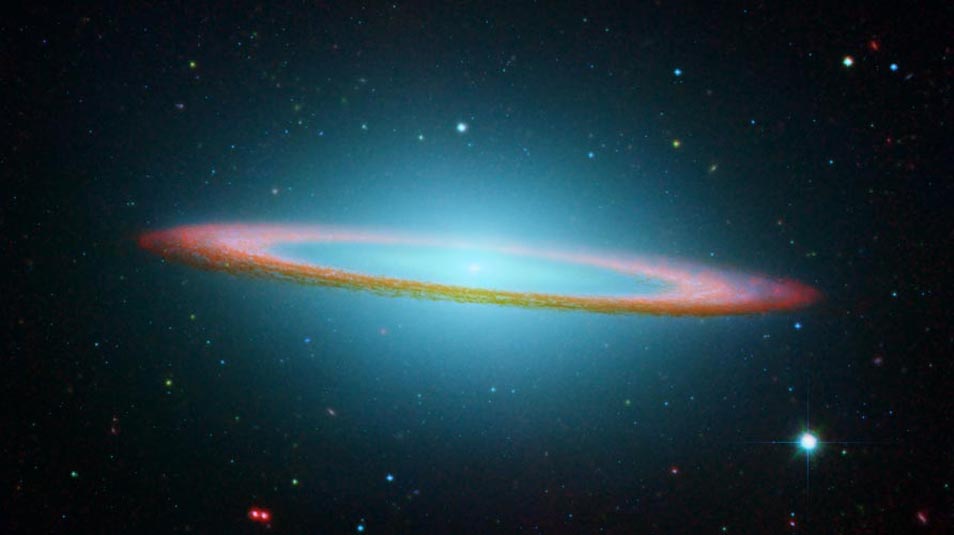
Edge-on Spiral Galaxy
R.A. 12h 39m 59s.43 Dec. -11° 37' 23".0
Virgo
28 million light-years (9 megaparsecs)
This image is roughly 10 arcminutes (82,000 light-years or 25,000 parsecs) wide.
NASA/JPL-Caltech and The Hubble Heritage Team (STScI/AURA)
October 2, 2003
Hubble optical View: G0328a
ABOUT THIS IMAGE:
NASA's Spitzer and Hubble Space Telescopes joined forces to create this striking composite image of one of the most popular sights in the universe. Messier 104 is commonly known as the Sombrero galaxy because in visible light, it resembles the broad-brimmed Mexican hat. However, in Spitzer's striking infrared view, the galaxy looks more like a "bull's eye."
In Hubble's visible light image, only the near rim of dust can be clearly seen in silhouette. Recent observations using Spitzer's infrared array camera (lower right panel) uncovered the bright, smooth ring of dust circling the galaxy, seen in red. Spitzer's infrared view of the starlight, piercing through the obscuring dust, is easily seen, along with the bulge of stars and an otherwise hidden disk of stars within the dust ring.
Spitzer's full view shows the disk is warped, which is often the result of a gravitational encounter with another galaxy, and clumpy areas spotted in the far edges of the ring indicate young star-forming regions.
The Sombrero galaxy is located some 28 million light-years away. Viewed from Earth, it is just six degrees south of its equatorial plane. Spitzer detected infrared emission not only from the ring, but from the center of the galaxy too, where there is a huge black hole, believed to be a billion times more massive than our Sun.
The Spitzer picture is composed of four images taken at 3.6 (blue), 4.5 (green), 5.8 (orange), and 8.0 (red) microns. The contribution from starlight (measured at 3.6 microns) has been subtracted from the 5.8 and 8-micron images to enhance the visibility of the dust features.
The
Hubble Heritage Team took these observations in May-June 2003 with the
space telescope's Advanced Camera for Surveys. Images were taken in three
filters (red, green, and blue) to yield a natural-color image. The team
took six pictures of the galaxy and then stitched them together to create
the final composite image. This magnificent galaxy has a diameter that
is nearly one-fifth the diameter of the full Moon.